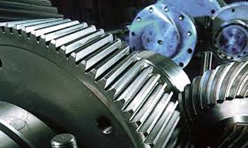20NiCrMo13-4 1.6660 Case Hardening Steels
1. 1.6660 Application
• Gears subjected to high stresses, diverse parts subject to wear and fatigue in service.
• In the quenched and tempered condition: safety-critical parts.
2. 1.6660 Characteristics
• High mechanical properties.
• Good fatigue strength.
• After carburising, quenching and tempering, the surface hardness is around 730 HV.
• Good toughness of the carburised layer.
• For some carburising applications, oil quenching can be replaced with gas pressure quenching in order to minimise distortion due to the heat treatment.
3.All Grades Comparison
| DIN | EN |
|---|---|
| 1.6660 | 20NiCrMo13-4 |
4.Quality Standard
EN 10084 2008 Case hardening steels
5. 1.6660 Chemical Composition(%)
| C | Mn | Si | P | S | Cr | Ni | Mo |
|---|---|---|---|---|---|---|---|
| 0.17-0.22 | 0.30-0.60 | 0.40 max | 0.025 max | 0.035 max | 0.80-1.20 | 3.00-3.50 | 0.30-0.50 |
6.Hardness requirements for products delivered in the conditions
| Process | Hardness |
|---|---|
| treated to improve shearability | 277HB max |
| soft annealed | 255HB max |
| treated to hardness range | 207HB-255HB |
| treated to ferrite-pearlite structure and hardness range | 197HB-241HB |
7.Conditions for heat treating test bars and treatment of the steels:
| Process | Temperatures (oC) |
|---|---|
| End quench test | 850 |
| Carburizing | 880-980 |
| Core-hardening | 825-880 |
| Case-hardening | 800-850 |
| Tempering | 150-250 |
8.Mill′s test certificate:
EN 10204/3.1 with all relevant data reg. chem. composition, mech. properties and results of testing.

